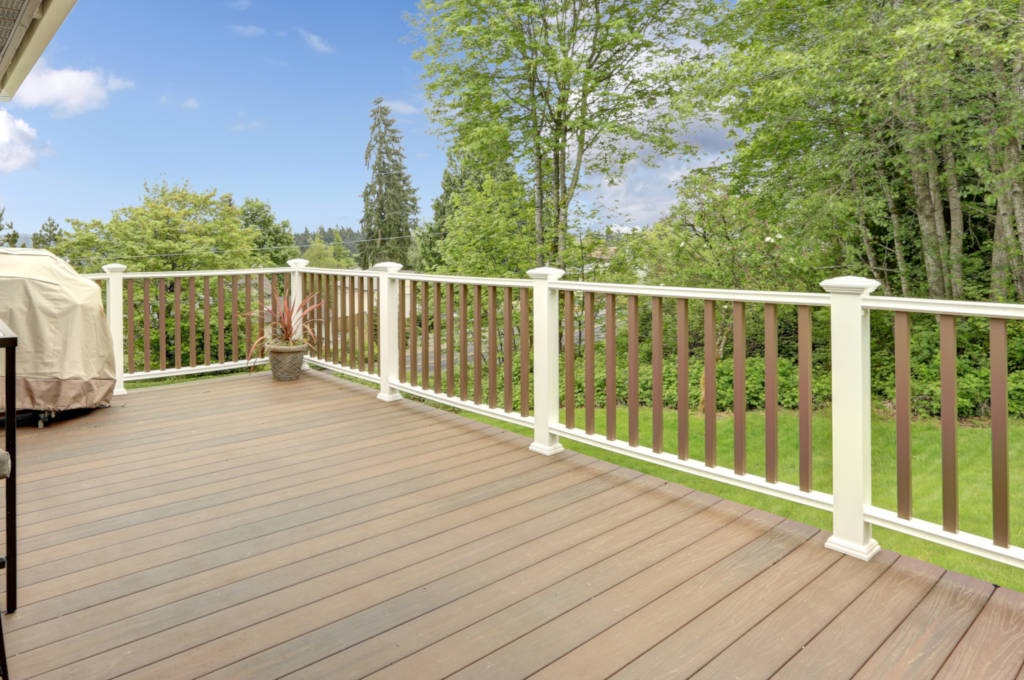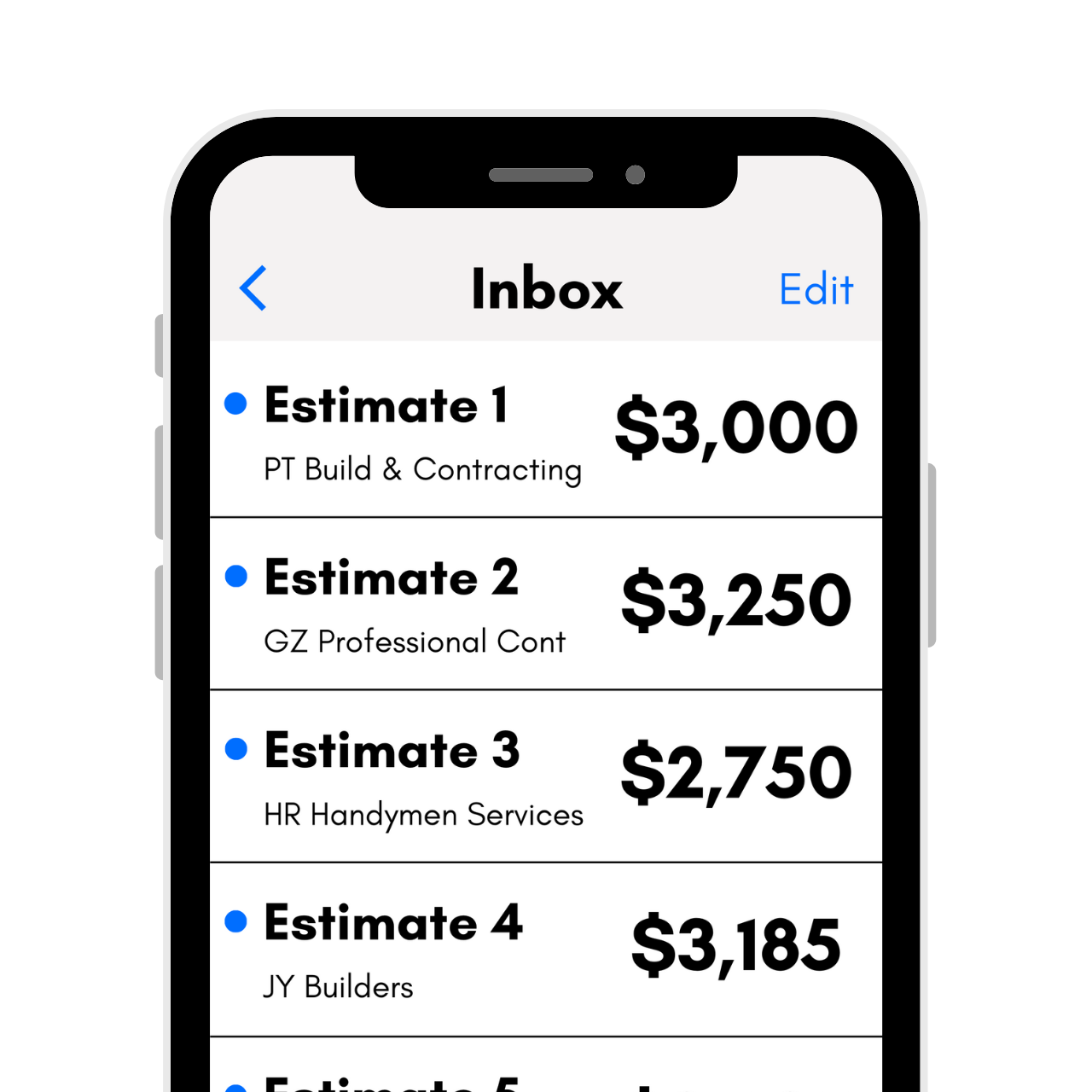Deck Board Material Calculator
Calculate how many deck boards, hidden fasteners, and screws you need for a deck, given the deck’s size and preferred board length. Estimate the cost of decking, hidden fasteners, and screws by entering a price per board.
Material Estimate:
| Deck Boards: | |
| Hidden Fasteners: | |
| Screws: |
Estimated Material Cost:
| Deck Boards: | $ |
| Hidden Fasteners: | $ |
| Screws: | $ |
On this page:
How to Estimate Decking
Decks are a great way to add usable outdoor space to your home. There are many flooring surface options, including composite decking, cedar lumber, pressure-treated lumber, and exotic hardwoods. Before you can estimate materials for your project, you’ll need to gather some information about your deck.

Step One: Select Your Material
The first thing to do when estimating decking is to select the decking material you want to use. Consider budget, durability, and maintenance when choosing the flooring material for your project.
- Composite Decking: Composite decking is virtually maintenance-free, but it carries a higher cost than pressure-treated or cedar lumber. Some composites can get very hot in the sun, however, which may make them a poor choice for hot climates.
- Cedar Decking: Cedar makes a good choice for those that like natural colors and stains, but can be pricey depending on where you live, and if you paint it, it will require a primer to avoid cedar bleed.
- Pressure-Treated Decking: Pressure-treated lumber is a low-cost option, but will require you to use galvanized screws, nails, and fasteners to avoid rust over time. It can also be higher in maintenance than either cedar or composites.
It’s also important to consider the flooring fasteners you want to use, such as a hidden fastener or face-screwing the boards, so you can estimate the correct materials to order. Your decking material will impact the type of fasteners you use, as well as how many you need since the spacing may vary.
Step Two: Measure the Deck Area
To estimate deck flooring materials, you need to find the square footage of your project. You’ll need to know your deck’s size in both length and width.
Multiply the deck’s length in feet times the width in feet to find the square footage. For example, a deck that is 10′ wide by 20′ long has 200 sq ft (10 × 20 = 200).
If your deck has a triangular section, multiply the length and width of two sides, then divide in half. If your deck is L-shaped or U-shaped, divide the deck into sections, get the square footage of each, then add them together for the total square footage.
Check out our square footage calculator for tips on calculating the square footage of oddly shaped areas.
Step Three: Determine Joist Spacing
You’ll need to know the joist spacing you are planning to use in order to determine the ideal board length and the number of fasteners you need, most commonly 12″, 16″, 20″, or 24″.
While joint spacing may not directly impact the number of boards you need, it can affect how many fasteners you use, and may help determine the correct length of boards for the project. Shorter joint spacing will require additional fasteners, but gives you more flexibility with board length, so you may be able to avoid having as many cuts.
Step Four: Determine Deck Board Sizes
Most boards are available in 3 ½” or 5 ½” widths and 8′, 10′, 12′, 16′, or 20′ lengths. The widely available selection is 5 ½” widths and 12′ or 16′ lengths.
Step Five: Find Board Area
Once you have selected your board length and measured the deck’s square footage, you need to find the square footage of the board. To find this, multiply the width of the floorboard in feet times the length in feet.
Try our feet and inches calculator to convert the board width in inches to feet, or measure both the width and the length of the board in inches, multiply them together, then divide by 144 to get the square footage of the board.
For example, if your boards are 5 ½” x 16′, you would multiply 5.5 × 192, then divide by 144 to get 7.34 sq ft per board.
Step Six: Calculate the Number of Boards
To find the number of boards you need, divide the total deck square footage by the board square footage. Use the following formula.
deck boards needed = total sq ft / board sq ft
If you want a deck flooring price estimate when using the calculator, include the price per board. If you need to estimate your railing balusters use our baluster calculator.
If your deck measures 10′ wide by 20′ long, and you are using 5 ½” wide, 16′-long boards, your formula would look like this:
200 sq ft ÷ 7.34 sq ft = 24.25 boards
Round up to the nearest full board, in this case, 25 boards.
Deck Flooring Estimation Tips
Now that you’re a pro at estimating deck boards, consider the following tips as you continue to plan your project.
Remember the Stairs
In addition to measuring the deck area, measure how much lumber you’ll need for stairs as well. Use the same method to calculate your boards: get the length and width of each step in inches, multiply them together, and divide by 144 to get the square footage for each step.
Add them up to get the total square footage of stairs, then divide by the square footage of one board.
Order Extra Material
It’s also a good idea to order 10% additional lumber to account for waste and off-cuts. Ideally, you should also have a plank or two left over at the end of the project. Store these in case of needed future repairs. If you are installing your deck planks on a diagonal or in a pattern, order 20% extra material, as patterns require additional cuts and waste.
Order Extra Fasteners
Also, don’t forget to order enough fasteners for your project, such as hidden fasteners or stainless or galvanized screws. Make sure you order the correct fasteners for the type of decking you’re ordering. Some products, such as composite boards, may require a specific type of hidden fastener or screw.
Because composite boards are made by several manufacturers, always refer to the manufacturer’s installation guide for the type of composite you are using to get the right material. As with the decking, make sure you order at least 10% more fasteners to account for any that get bent or lost during the project.
Different Decking Materials are Sold Differently
While most composite, pressure-treated, or softwood decking (e.g. cedar or redwood) is sold by the board, some hardwood or exotic options are sold by the board foot. If that’s the case, use a board footage calculator to estimate how much lumber you’ll need for the project.
Board feet are calculated by the volume of each board, so you will need to know the decking thickness as well; most deck planks are 1 inch thick, but this can vary, so always check to be sure.
Estimate the Total Cost
Before you start your project, check out our deck cost calculator to get an idea of how much it costs to build a deck and what options are available.
Get Professional Estimates in Addition to Research
We have several great resources to help with your deck project. Get a free estimate from a local contractor if you’re interested in having someone else quote the project. Estimate how much concrete you need for your posts with our concrete footing calculator.



